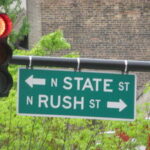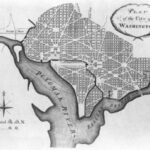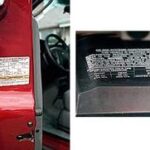On today’s tires there are so many numbers that it can be very confusing to try and interpret what all the numbers printed on the sidewall of your tires mean. This article will describe what all the words and numbering mean in very simple terms so they are easy to understand for the next time you go to purchase tires, especially if you are purchasing performance tires for a hot rod or a soup’d up street car. I am going to use the tires off of my sport compact car that has performance tires installed as an example throughout the article; my tire is a Falken Azenis and it reads 205 50R 15 89 W, Treadwear 200, and Traction A..
Falken Azenis are good summer tires that are very sticky and best suited for autocross, but you can use this information to cross reference any tire. So what does the “205” mean on my tire? The “205” on my tire is the measurement of width of the tire in millimeters. Basically, it’s how wide the tread on the tire is from the inside of the wheel well to the outside of the tire where the tread meets the sidewall.
So what is the “50R”? Well, there are two things going on here; first the “50” is an aspect ratio of a percentage of the width of the tire in correlation to the sidewall. In layman’s terms the side wall is 50% percent as tall as the width of the tire. So, in other words if you were to measure the side wall it would be approximately 102.5 millimeters. Now for the “R”, the “R” on my tire is a designation that means it’s a radial. Most contemporary tires will be radials; however there are others. For instance a “B” would be a belt bias tire and a “D” would be a diagonal bias tire. These tires will be very rare to find and are most likely vintage tires or very cheap ones.
The “15” on my tire is simple. This number on the tire simply means the diameter of the wheel in inches that the tire is designed for. Now for the “89”, this is the tires load index; for example a set of four tires with a 82 load index could support a vehicle that weighs 4,188 pounds. To look up the load index on your tires there is a helpful link here http://www.coasttire.com/tires/LoadIndex.html load index weight supported in kilograms.
The “W” on my tire is the speed rating, for example my tires are good for about 168mph before there is a potential for them to heat up to the point where they could possibly separate. I decided on this speed rating because I have no intentions of ever driving faster than that as my car is street driven and it is not fast enough to obtain those speeds in the quarter mile at the drag strip. Here is a speed rating chart http://www.tirerack.com/tires/tiretech/techpage.jsp?techid=35&
Tread wear is pretty simple to understand, the higher the number the longer the tire will last; the lower the number the shorter time period or mileage the tire will last. Most performance traction tires will have a very low number as they are made of softer tire compounds to make them sticky when heated up, in order to ensure that your vehicle gets traction when you have a lot of power at the wheels. As an example a full competition radial semi-slick race tire has a tread wear of about 40.
Traction ratings are meant to be a guide as to what level of traction a tire will get on dry pavement; they go from best to worst starting at “AA” to “A”, “B”, and “C” in their ratings.
** You should never inflate your tires over the recommended maximum tire inflation pressure found on your sidewall.
**The higher your tire pressure is the more longevity and fuel economy you will get. However you will have less traction on wet or rainy roads.
**The lower your tire pressure you will have better traction on dry and wet roads, however fuel economy and cornering consistency will be affected as well as the overall life of the tire.






